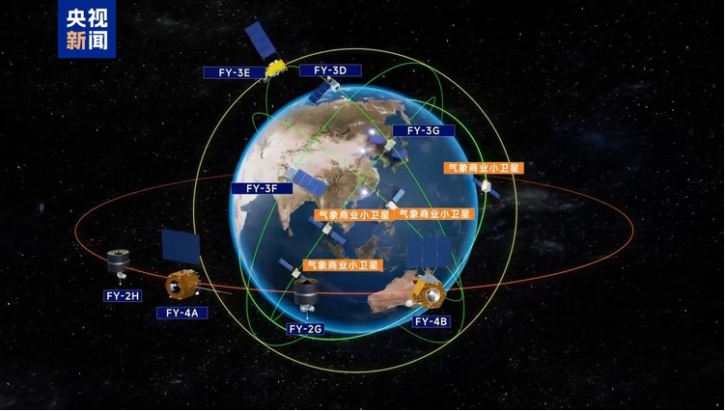The China Meteorological Administration (CMA) has enabled commercial meteorological small satellites to begin operating in its integrated meteorological observing system for the first time.
On December 30, 2024, 23 satellites of the Tianmu-1 constellation and 12 satellites of the Yunyao-1 series entered the CMA’s operational system, providing powerful support for China’s meteorological forecasting and prediction.
At present, the Tianmu-1 constellation provides about 30,000 occultation profile products to CMA on a daily basis, while the Yunyao-1 series of satellites provide about 15,000 occultation profile products, complementing the temporal and spatial resolution of Fengyun (FY) meteorological satellites in occultation detection, and increasing by a multiple of 2.48 the number of atmospheric profile products assimilated into China’s global numerical weather prediction (NWP) system.
These occultation profile products can be applied to NWP, global typhoon monitoring and assisting in the short-range forecasting of severe convective weather, such as hail and lightning, and provide support for the research on climate change.
Fang Xiang, director general of the department of integrated observations at CMA, said in a report on the CMA’s website that commercial meteorological small satellite data could play an important role in meteorological forecasting and prediction, and it was necessary to encourage and guide their development. Accordingly, CMA has clarified the operational access, technical requirements and division of departmental responsibilities of commercial satellites in meteorological observation operations, guided the integration of commercial satellite observations into meteorological operational systems, and accelerated the promotion of the wide application of high-value commercial satellite products in the meteorological departments.
Wang Jingsong, director general of the National Satellite Meteorological Centre (NSMC) of CMA, said that commercial small satellites have the advantages of being mobile, flexible, customized and distributed, and that synergistic observation with FY meteorological satellites can better meet the needs of meteorological operations. At present, China’s eight FY meteorological satellites in orbit have been incorporated into the World Meteorological Organization’s Integrated Global Observation System (WIGOS). The incorporation of commercial small satellites helps further enhance the temporal and spatial resolution of global observation and increase the detection elements of the Earth’s multi-circle layer. In addition, commercial small satellites can also be used for the verification of new technologies and scientific validation of the next-generation FY meteorological satellites.
Lu Qifeng, deputy director general of the CMA Centre for Earth System Modeling and Prediction (CEMC), said that according to the results of the preliminary trial, both the Tianmu-1 and Yunyao-1 occultation profile products had made positive contributions to CMA’s NWP system.



